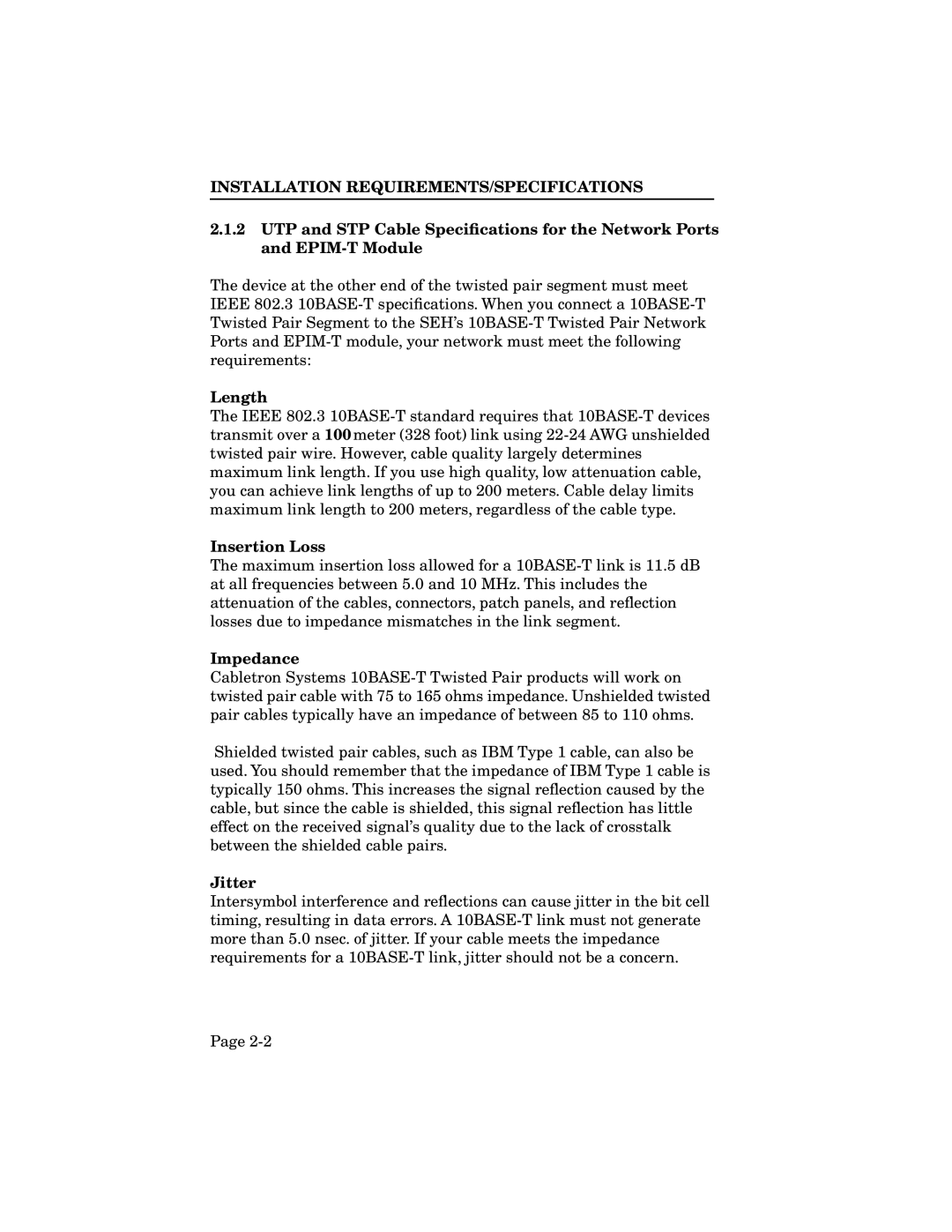INSTALLATION REQUIREMENTS/SPECIFICATIONS
2.1.2UTP and STP Cable Specifications for the Network Ports and EPIM-T Module
The device at the other end of the twisted pair segment must meet IEEE 802.3 10BASE-T specifications. When you connect a 10BASE-T Twisted Pair Segment to the SEH’s 10BASE-T Twisted Pair Network Ports and EPIM-T module, your network must meet the following requirements:
Length
The IEEE 802.3 10BASE-T standard requires that 10BASE-T devices transmit over a 100 meter (328 foot) link using 22-24 AWG unshielded twisted pair wire. However, cable quality largely determines maximum link length. If you use high quality, low attenuation cable, you can achieve link lengths of up to 200 meters. Cable delay limits maximum link length to 200 meters, regardless of the cable type.
Insertion Loss
The maximum insertion loss allowed for a 10BASE-T link is 11.5 dB at all frequencies between 5.0 and 10 MHz. This includes the attenuation of the cables, connectors, patch panels, and reflection losses due to impedance mismatches in the link segment.
Impedance
Cabletron Systems 10BASE-T Twisted Pair products will work on twisted pair cable with 75 to 165 ohms impedance. Unshielded twisted pair cables typically have an impedance of between 85 to 110 ohms.
Shielded twisted pair cables, such as IBM Type 1 cable, can also be used. You should remember that the impedance of IBM Type 1 cable is typically 150 ohms. This increases the signal reflection caused by the cable, but since the cable is shielded, this signal reflection has little effect on the received signal’s quality due to the lack of crosstalk between the shielded cable pairs.
Jitter
Intersymbol interference and reflections can cause jitter in the bit cell timing, resulting in data errors. A 10BASE-T link must not generate more than 5.0 nsec. of jitter. If your cable meets the impedance requirements for a 10BASE-T link, jitter should not be a concern.
